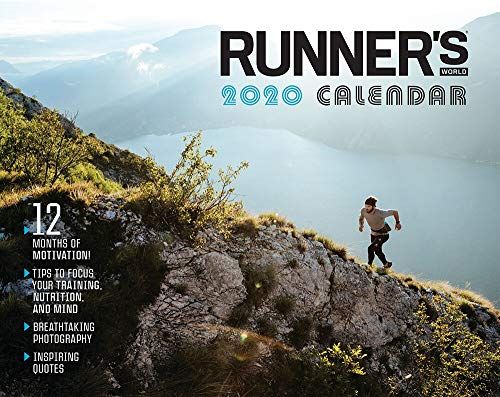Treadmill training often receives a bad rap. Maybe it’s because indoor runners don’t face outside factors—temperature, wind, and various terrain—that can affect running pace and performance. But Becs Gentry, a Peloton Tread instructor from Great Britain who’s based in New York City, wants to prove that runners can reap serious rewards from the ’mill.
On November 3, Gentry, 33, finished the New York City Marathon in 2:37:01, a personal best by 12 minutes. That wasn’t her only record of the day: she came through the 13.1-mile mark at 1:16:46, a new half marathon PR.
Previously a Nike+ Run Coach and long-distance specialist (her résumé boasts a 50K, 47K, and the 2017 Berlin Marathon, along with high school cross-country experience), Gentry moved to the Big Apple last fall to accept her new position at Peloton and promptly began training for 2019 races. In February, she finished the Hong Kong Marathon in 2:52:39. Two months later, she set a personal best of 2:49:39 in Boston. For her third 26.2-miler of the year, Gentry made her New York debut, and she crushed it.
“The half marathon point was on an incline, and seeing that [half] time was a huge motivation to keep driving up the hill,” Gentry told Runner’s World. “I checked in with my body and I couldn’t find any reason to slow down the pace.”
To train for the marathon, she logged between 100 and 120 miles per week, splitting her mileage between Peloton classes—she teaches up to five classes each week, running eight to nine miles in a 60-minute class—tempos, and long runs. On Tuesday nights, she taught a marathon-focused speedwork class, which featured workouts like 5 x 1-mile repeats or 12-minute intervals at marathon pace. While she did a hefty portion of her weekly mileage on the treadmill, Gentry said that she went outside for her tempos and long runs, which were upward of 24 miles during her buildup to New York.
“I trained at 6:00 mile pace all year on the treadmill, so I was comfortable running that pace during the race,” Gentry said. “Running a certain pace outside shouldn’t feel any different than running it on the treadmill with a 1 percent incline. As long as you stay present while you’re running on the treadmill, rather than zoning out, you’re teaching your body to remember the pace.”
For most runners, speedwork sessions are not very photogenic—especially when you’re soaked in sweat and breathing heavily on a treadmill. But as an instructor, Gentry has to stay composed and conversational during intervals. She’s responsible for leading the students in her studio class, plus hundreds of other Peloton users tuning into the workout remotely. Gentry said that when she was powering down the final stretch in Central Park, the enormous crowds reminded her of a studio audience; she channeled their energy to push even harder through the line.
“I think teaching classes on the treadmill has definitely boosted my cardio fitness and confidence,” Gentry said. “Talking while running uses up a lot of air, and it takes a lot of focus to stay present and engaged when the pace gets tough.”
Even if you aren’t instructing a class, logging miles on a treadmill requires you to focus on maintaining a straight and steady running form because you’re restricted by physical space (i.e., the belt) and pace.
“I like the treadmill more than the track, because it’s a straight line the whole time,” Gentry said. “It also forces you to hold a steady pace, which is especially important for new runners who are unfamiliar with pace. Gradually, your body gets used to that pace, and you have more confidence when you step outside.”

Fourteen miles is the farthest she’s ever gone on a treadmill at once.
“Long runs are the most important part of marathon training,” Gentry said. “I always advise my runners to go outside for long run. It’s like a dress rehearsal for the big day. You have to get used to feeling the ground beneath you and keeping pace without a clock in front of you.”
Along with her classes, long run, and tempo workouts, Gentry does a second run three or four times per week to get up to triple digits in mileage. In addition to running, she does regular core and strength work. In her downtime, she prioritizes recovery: She keeps her feet elevated, self-massages her legs, sleeps in whenever she can (which, for the “morning person,” means 6:30 or 7 a.m.), and makes sure her schedule isn’t too packed with extra energy-zapping activities.
“I’m a really social person, but my friends and family know to give me space when I need it,” Gentry said. “Sometimes you just have to power down.”
With fall marathon season now wrapping up and winter soon approaching, Gentry wants to remind runners that opting for the treadmill isn’t a bad thing. In fact, it might be the secret to a faster spring marathon in 2020.
“If it’s bitter cold and icy outside, you’re going to get a better quality workout on the treadmill,” she said. “It might make you feel tougher or look good on Instagram to go out in a blizzard, but it’ll be detrimental for you in the long run.”
From: Runner’s World US
Source: Read Full Article
